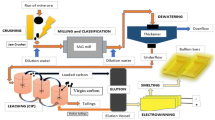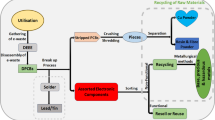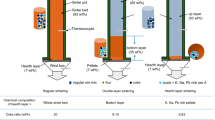Abstract
The bulk and surface chemical composition of Renaissance coins minted at Gubbio (Central Italy) from 1508 to 1516 and from 1521 to 1538 by Francesco Maria della Rovere is investigated by means of the combined use of different analytical techniques such as scanning electron microscopy (SEM), energy dispersive spectrometry (EDS), and optical microscopy (OM). The aim of the work is to determine the bulk chemical composition of these commonly used coins at Gubbio, to ascertain their surface nature and if they were coated by a thin film of silver or other white metals similar to silver.
The results indicate that the coins were produced by coating a copper core with a thin film of silver and antimony, and also with lead whose thickness is of a few microns which is now scarcely present because the original silvered surface was almost entirely removed by degradation phenomena. Furthermore, the SEM+EDS results show that the surface content of silver and antimony cannot be attributed to long-term selective corrosion phenomena leaving the coin slightly silver or antimony enriched. Therefore, the presence of silver or apparently silver-like metals i. e. antimony and lead, could be considered as a deliberate surface finishing of the coins obtained via inverse segregation or intentional selective corrosion based on pickling solutions or a combination of them. From a historical point of view the presence of a Ag or Sb film on the surface of the coins discloses the occurrence of a period of economic difficulties.
Similar content being viewed by others
References
D.A. Scott: Metallography and Microstructure of Ancient and Historic Metals (Getty Conservation Inst., The Paul Getty Museum, CA, USA 1991) p. 25
N.D. Meeks: Archaeometry 28, 133 (1996)
I.A. Carradice, S. La Niece: Numismatic Chronicle 34 (1988)
N.D. Meeks: Proc. 26th Int. Archaeometry Symp., R.M. Farquar, R.G.V. Hancock, L.A. Pavlish (Toronto 1988) p. 124
C.E. King, R.E. Hedges: Archaeometry 16, 189 (1974)
L.H. Cope: Archaeometry 15, 221 (1973)
C. Fink, A.H. Kopp: Metropolitan Museum Studies 4, 163 (1933)
A. Lucas, J.R. Harris: Ancient Egyptian materials and industries (London Histories and Mysteries of Man, London 1989)
P.A. Lins, W.A. Oddy: J. Archaeolog. Sci. 2, 365 (1975)
A. Oddy: Gilding of metals in the Old World, In Metal Plating and Patination, S. La Niece, P.T. Craddock (Oxford Butterworth-Heinemann, UK 1993)
K. Anheuser: Bull. Metals Museum 26, 48 (1996)
R.F. Tylecote: A History of Metallurgy, 2nd ed. (Inst. of Materials, book no. 498, London 1992)
Author information
Authors and Affiliations
Corresponding author
Additional information
PACS
68.55.Jk; 68.35.Dv; 68.37.Hk; 68.55.Nq; 81.05.Bx
Rights and permissions
About this article
Cite this article
Ingo, G., de Caro, T., Padeletti, G. et al. Microchemical investigation on Renaissance coins minted at Gubbio (Central Italy). Appl. Phys. A 79, 319–325 (2004). https://doi.org/10.1007/s00339-004-2526-0
Received:
Accepted:
Published:
Issue Date:
DOI: https://doi.org/10.1007/s00339-004-2526-0




